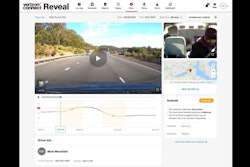
Trucking across the country comes with a lot of safety risks to mitigate. One such risk that isn’t discussed enough is parking safety. Drivers must be knowledgeable on how to safely park in a variety of situations whether it be pulling off onto the side of the road or finding safe and reliable overnight parking. On average, 3 million trucks drive across the country each day, but there are only about 300,000 parking spaces to accommodate them.
Truck drivers need and deserve access to safe, secure, and accessible parking. It can become unsafe for tired drivers to continue on the road because they cannot find a safe and large enough spot to park in. Some drivers may even choose to park in unsafe locations like the shoulder of the road, exit ramps, or vacant lots if they can’t find available parking.
Many studies by academics and non-profits alike have focused on the inadequacy of truck parking. These studies have found that while there is expected growth in trucking activity, there are severe shortages of parking for trucks, as well as a lack of information on where trucks are able to park. Timing is also found to be an issue due to limited delivery windows and specific rest requirements.
There is current legislation in the works to fix the issues found in those studies. However, fixing infrastructure takes a while, and there are a few things drivers can do for themselves in the meantime to stay safe.
Safety measures drivers can take
While mitigating the shortage of parking, there are a few steps every driver can take to ensure their safety. For example, when pulling into a truck stop, drivers should park as far away from traffic as possible. It is also helpful to find parking spots that drivers can pull through or back into.
Try to avoid parking next to trucks that look like they’re about to leave soon, or ones with a not-great parking job. If possible, avoid parking next to any trucks at all or at the end of rows. This will decrease the risk of hitting or being hit by other vehicles. A good tip is to try to park next to immovable objects such as poles that will make it less likely for another truck to hit yours on that side.
Planning out what lots to park in beforehand is crucial. Planning ahead can help drivers avoid any illegal or unsafe parking situations. Drivers who plan to sleep in their cab overnight should remember to close their windows, lock the doors, and hide any valuables. Installing dash cameras can also help a driver feel safe and be used by their employer for insurance purposes.
Drivers should never park on the shoulder of a highway unless there is an emergency, in which case they should activate their emergency flashers, and place emergency warning devices within 10 minutes of stopping. It’s also helpful to be mindful of parking on or around grass, leaves, or weeds because the undercarriage and exhaust from a truck can spark a fire, creating a dangerous situation for the driver and cargo alike.
Where to park in the absence of equipped parking
If there is no equipped parking for trucks nearby, but rest is necessary, a heavy truck can be stopped at parking lots that are fenced and illuminated at night. In this regard, a stalemate arises when, on the one hand, there are strict rules prohibiting the parking of trucks outside specially designated areas, and on the other hand, the number of such places is insufficient to meet the needs of long-haul truck drivers. The corresponding infrastructure must be developed, there are regions where you will not find a single parking lot at a distance of hundreds of miles along the highway.
Legal measures in the works
The lack of safe parking for trucks is ultimately an infrastructure problem. Legislators are promptly working to establish laws to mitigate this problem. One such example is known as "Jason's Law" which was created as a "national priority on addressing the shortage of long-term parking for commercial motor vehicles on the National Highway System to improve the safety of motorized and non-motorized users and for commercial motor vehicle operators."
In other words, this law helps fund and create comprehensive research and programs needed to improve truck parking availability. Jason’s Law also helps to provide states with the resources to identify parking needs and invest in improvements where they see fit.
Another example is the Truck Parking Safety Improvement Act which was introduced in the House in March 2021. The bill authorizes funds for the Department of Transportation (DOT) to provide parking for commercial motor vehicles on the federal-aid highway system. Through this bill, the DOT is able to provide grants for parking projects.
While legislation works to provide more safe and accessible parking for trucks, drivers can use the tips listed to ensure their personal and professional safety. Freight companies should make sure all their drivers are equipped with the knowledge and tools to stay safe




















